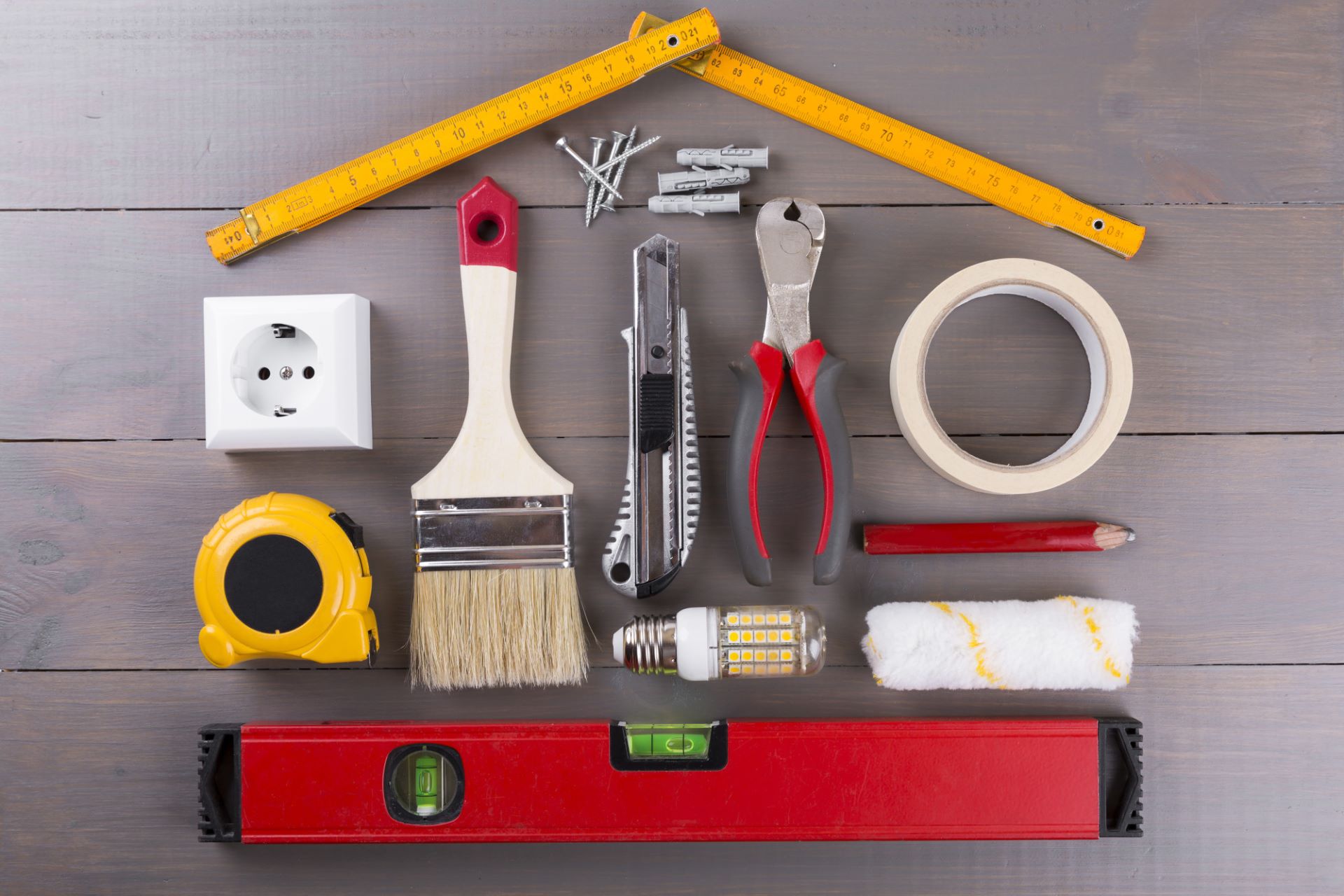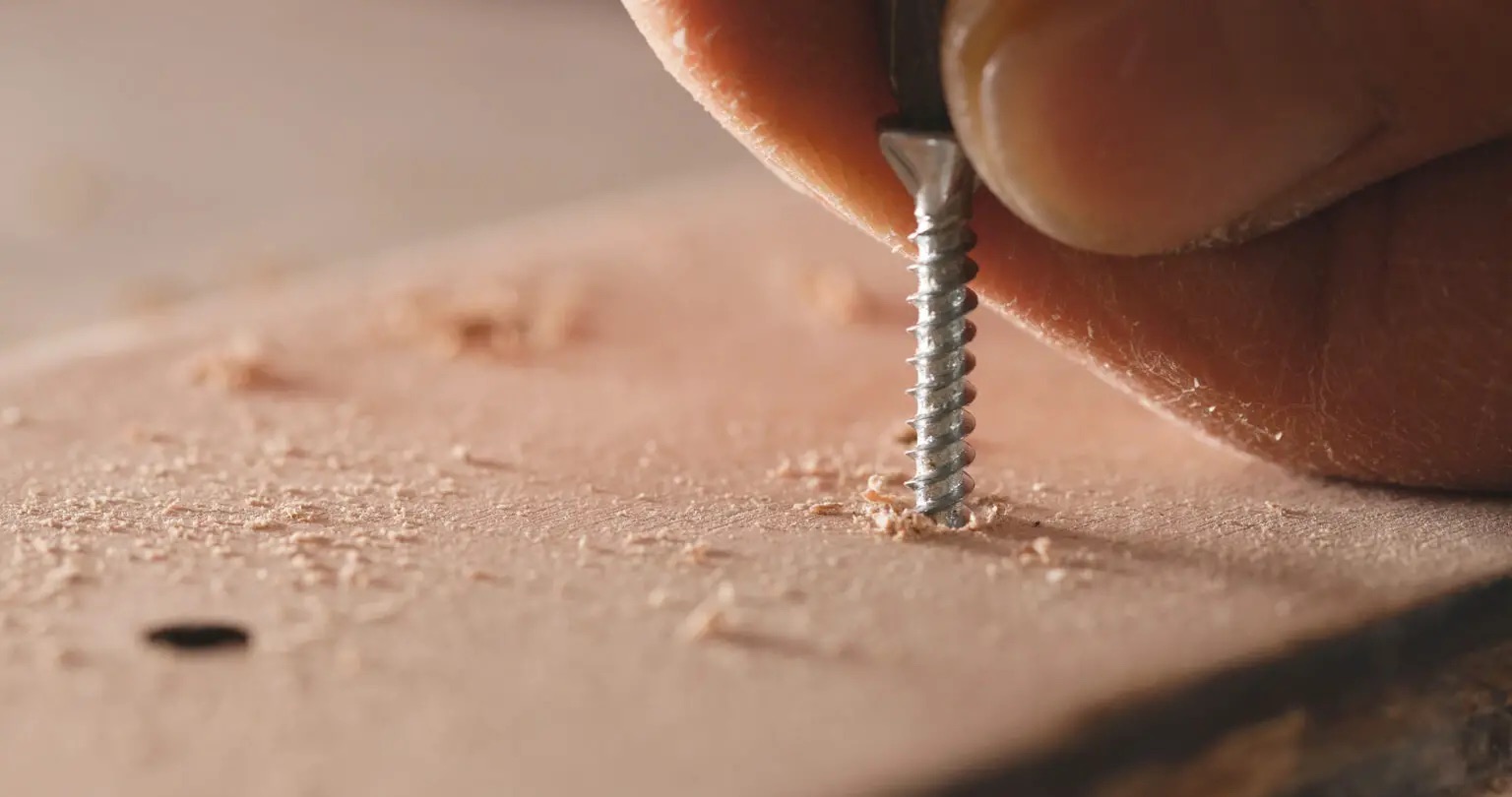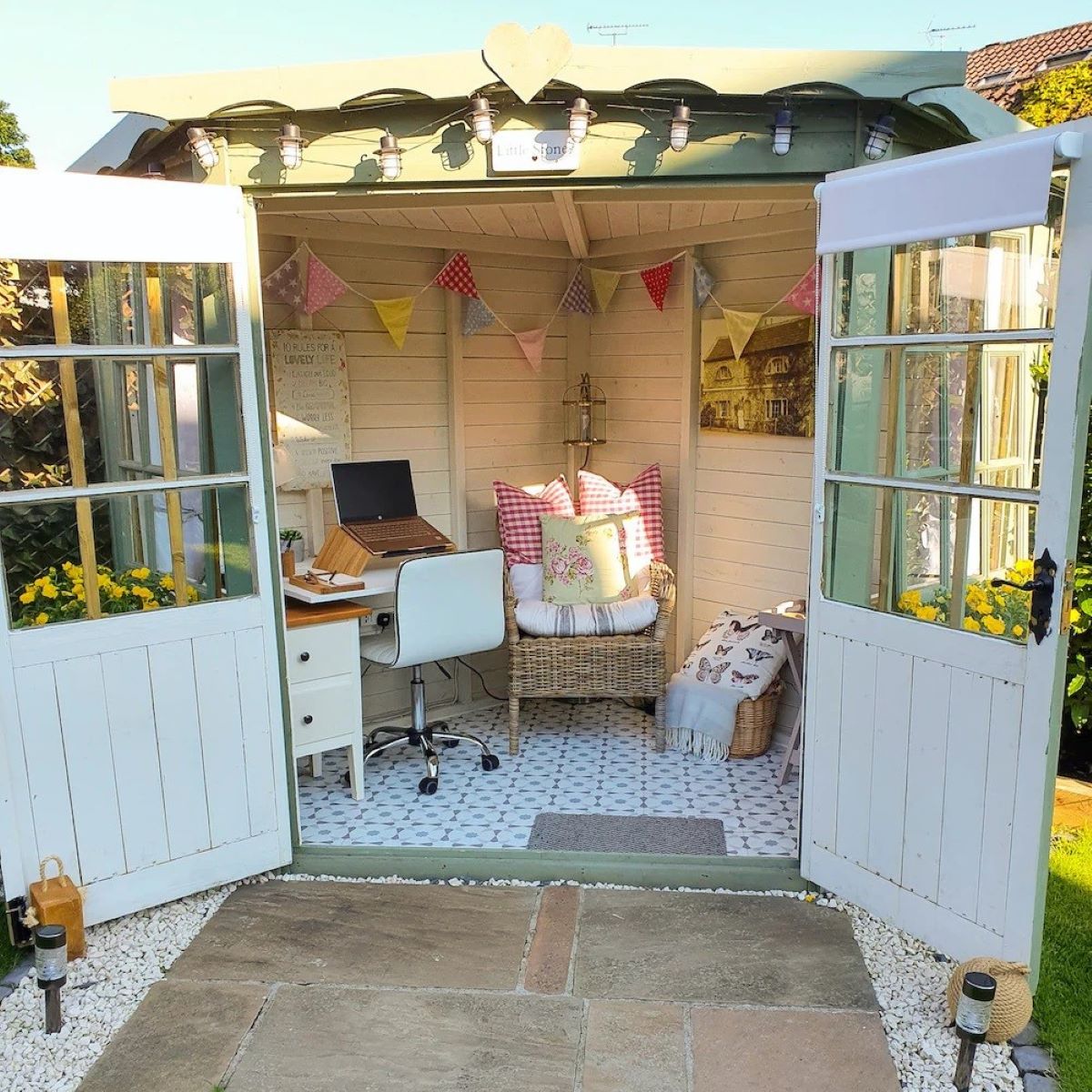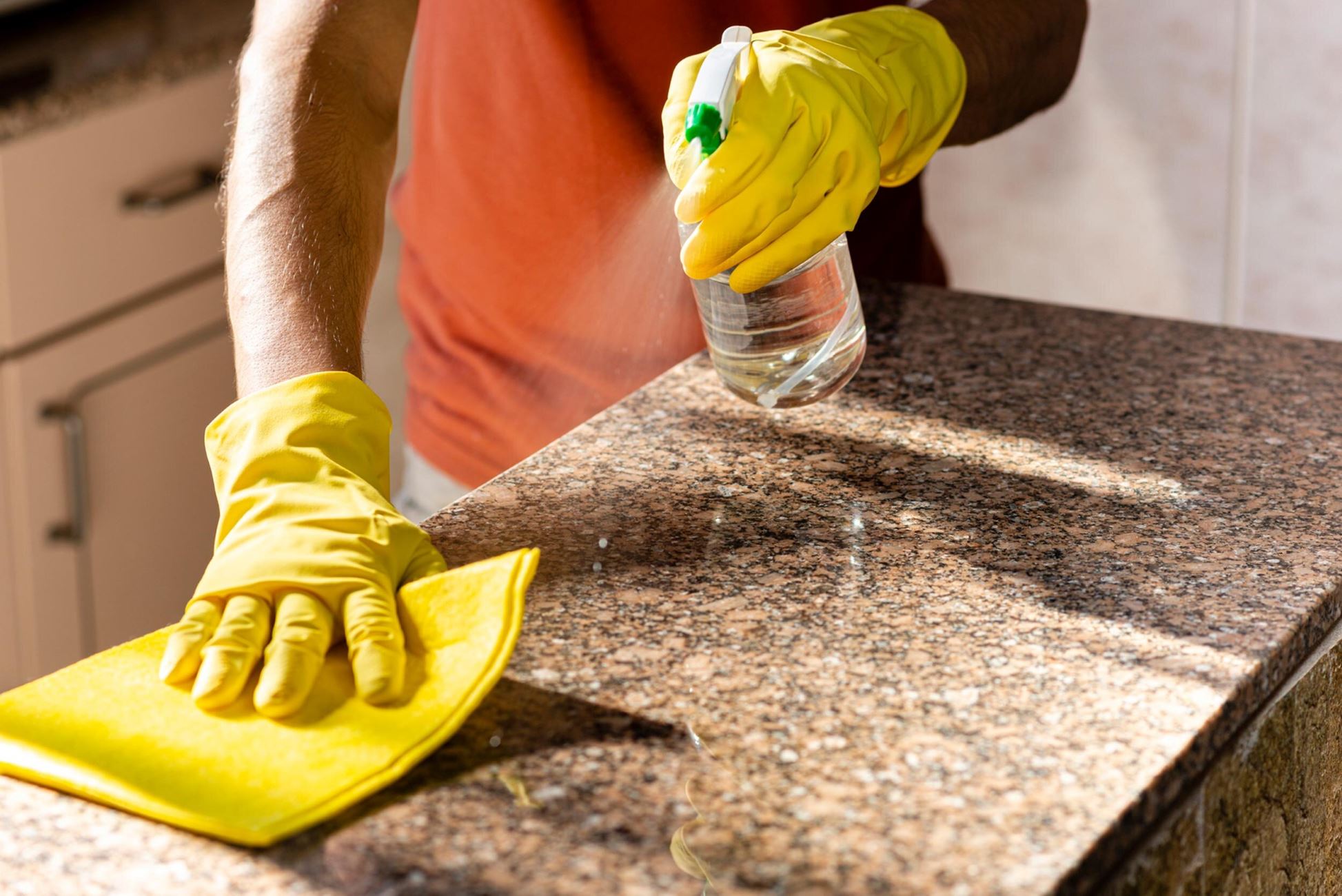Home>Renovation & DIY>DIY Projects & Ideas>How To DIY Home Projects


DIY Projects & Ideas
How To DIY Home Projects
Modified: August 26, 2024
Discover creative and practical DIY projects and ideas for your home. Get inspired and learn how to tackle DIY projects with confidence. Explore our step-by-step guides now!
(Many of the links in this article redirect to a specific reviewed product. Your purchase of these products through affiliate links helps to generate commission for Storables.com, at no extra cost. Learn more)
Introduction
Welcome to the world of do-it-yourself (DIY) home projects! Whether you’re a seasoned DIY enthusiast or just starting out, there’s something undeniably satisfying about rolling up your sleeves and transforming your living space with your own two hands. From simple home decor upgrades to full-scale renovations, the possibilities for DIY projects are endless.
In this comprehensive guide, we’ll explore everything you need to know to embark on successful DIY home projects. You’ll discover essential tips, step-by-step instructions, and valuable insights to help you tackle your next endeavor with confidence.
So, grab your tool belt, unleash your creativity, and get ready to dive into the exciting world of DIY home projects!
Key Takeaways:
- Plan your DIY projects carefully by setting clear goals, creating a budget, and assessing your skill level. Research ideas, gather essential tools and materials, and prioritize safety to ensure a successful and rewarding experience.
- Follow step-by-step instructions, avoid common mistakes, and embrace learning opportunities to elevate your DIY projects. Start small, seek inspiration, stay organized, and collaborate with others to enhance your skills and creativity.
Read more: How To Build A Trellis
Planning Your DIY Home Projects
Before diving into any DIY project, it’s crucial to start with a well-thought-out plan. Proper planning can save you time, money, and frustration in the long run. Here’s how to get started:
- Identify Your Goals: Begin by clearly defining the goals of your project. Whether you’re aiming to enhance the aesthetic appeal of a room, increase functionality, or address a specific need, having a clear vision will guide your decisions throughout the process.
- Set a Budget: Determine how much you’re willing to invest in the project. Research the costs of materials and tools to ensure that your budget aligns with your goals.
- Research and Gather Ideas: Explore various sources of inspiration, such as home improvement websites, magazines, and social media platforms. Create a vision board or a digital collection of ideas to help refine your project’s concept.
- Assess Your Skill Level: Be honest about your abilities and experience with similar projects. While challenging yourself is admirable, it’s essential to choose a project that aligns with your current skill set to avoid unnecessary setbacks.
- Create a Timeline: Estimate the time required to complete the project, considering potential interruptions or unexpected delays. Setting a realistic timeline will help you manage your expectations and stay organized.
By carefully planning each aspect of your DIY project, you’ll lay a solid foundation for a successful and rewarding experience. The next step is to gather the essential tools and materials for your specific undertaking.
Essential Tools and Materials
Equipping yourself with the right tools and materials is fundamental to the success of any DIY home project. Here’s a comprehensive list of essential items that should be part of every DIY enthusiast’s arsenal:
Basic Hand Tools:
- Hammer
- Screwdrivers (Phillips and flathead)
- Tape measure
- Adjustable wrench
- Pliers
- Utility knife
- Level
- Stud finder
Power Tools:
- Drill and drill bits
- Saw (circular, jigsaw, or miter)
- Sander
- Nail gun
- Power screwdriver
Read more: How To Build A Window Seat
Materials and Supplies:
- Lumber and plywood
- Nails, screws, and fasteners
- Paint and primer
- Adhesives (wood glue, construction adhesive)
- Sandpaper
- Electrical components (if applicable)
- Plumbing supplies (if applicable)
While this list encompasses the basics, the specific tools and materials required will vary depending on the nature of your project. It’s essential to conduct thorough research and create a detailed shopping list to ensure you have everything you need before getting started.
Additionally, investing in high-quality tools and materials, even if it means a slightly higher initial cost, can significantly impact the outcome of your project and its longevity. Now that you’re equipped with the necessary resources, it’s time to prioritize safety as a top consideration.
Safety Precautions
Prioritizing safety is non-negotiable when engaging in DIY home projects. By adhering to essential safety measures, you can protect yourself and others while ensuring a smooth and secure project execution. Here are critical safety precautions to keep in mind:
Protective Gear:
Always wear appropriate protective gear, including safety goggles, gloves, and a dust mask when working with tools, chemicals, or materials that generate debris or fumes. Additionally, consider using ear protection when operating loud power tools to safeguard your hearing.
Tool Handling:
Handle tools with care and familiarity, ensuring that they are in good working condition before use. Follow the manufacturer’s guidelines for tool operation and maintenance to prevent accidents and malfunctions.
Read more: How To Build Exterior Door Framing
Workspace Preparation:
Prior to commencing any project, organize your workspace to minimize potential hazards. Clear the area of clutter, secure electrical cords to prevent tripping, and ensure adequate lighting for visibility.
Electrical Safety:
If your project involves electrical work, always turn off the power to the relevant circuits before beginning any installations or repairs. Use insulated tools and exercise caution to avoid electrical shocks.
Ladder Safety:
When working at heights, utilize a sturdy, well-maintained ladder and position it on a level surface. Maintain three points of contact when climbing and avoid overreaching to prevent falls.
Chemical Handling:
When using paints, solvents, or other chemicals, ensure proper ventilation in the workspace. Follow the recommended handling and disposal procedures provided by the manufacturers to minimize health risks.
By integrating these safety precautions into your DIY routine, you can mitigate potential hazards and focus on the creative and constructive aspects of your projects. Now that safety is at the forefront, let’s delve into the step-by-step instructions for executing your DIY home projects with precision and finesse.
Read more: How To Sell Your DIY Projects
Step-by-Step Instructions
Embarking on a DIY home project involves a series of carefully orchestrated steps to achieve the desired outcome. Whether you’re revamping a room, constructing furniture, or tackling a home improvement task, following a systematic approach is key. Here’s a general framework for executing your DIY projects:
1. Preparation and Planning:
Clear the designated workspace and gather all necessary tools and materials. Review your project plans and familiarize yourself with the step-by-step process before initiating any work.
2. Measurement and Marking:
Accurate measurements are crucial for ensuring precision in your project. Use a tape measure and level to mark the areas where cuts, installations, or modifications will take place.
3. Cutting and Assembly:
If your project involves cutting materials such as wood or fabric, use appropriate tools to achieve clean and precise cuts. Assemble components according to your project plans, following any provided instructions or diagrams.
Read more: How To Build Retaining Wall On A Slope
4. Installation and Mounting:
Securely install the components or structures as outlined in your project. Use fasteners, adhesives, or mounting hardware as needed, ensuring that everything is level, plumb, and structurally sound.
5. Finishing Touches:
Apply any desired finishes, such as paint, stain, or sealant, to enhance the aesthetic appeal and durability of your project. Take your time to ensure a professional and polished appearance.
6. Clean-Up and Evaluation:
Thoroughly clean your workspace, properly dispose of any waste materials, and evaluate the completed project. Take note of any adjustments or final touches that may be necessary.
By following these step-by-step instructions, you can methodically progress through your DIY projects, minimizing errors and maximizing the quality of your craftsmanship. However, even with careful planning, it’s essential to be aware of common mistakes that DIY enthusiasts often encounter.
Common Mistakes to Avoid
While DIY projects offer a sense of accomplishment and creative fulfillment, they also present opportunities for missteps that can hinder the overall outcome. By recognizing and avoiding common pitfalls, you can elevate the quality of your projects. Here are some prevalent mistakes to steer clear of:
Read more: How To Lay Peel And Stick Tile Floors
1. Lack of Planning:
Rushing into a project without a clear plan can lead to confusion, rework, and unnecessary expenses. Take the time to outline your objectives, gather resources, and create a detailed roadmap for your project.
2. Ignoring Safety Precautions:
Disregarding safety protocols can result in accidents and injuries. Always prioritize safety by wearing protective gear, following proper tool handling procedures, and adhering to safety guidelines for each specific task.
3. Underestimating Time and Effort:
Many DIY enthusiasts underestimate the time and effort required for a project, leading to frustration and incomplete work. Be realistic about the resources needed and allocate ample time for each phase of the project.
4. Poor Quality Materials and Tools:
Using subpar materials and tools can compromise the integrity and longevity of your project. Invest in high-quality supplies and equipment to ensure a professional and durable result.
Read more: How To Make Dollar Store DIY Projects
5. Overlooking Permits and Regulations:
For substantial renovations or structural modifications, overlooking necessary permits and building codes can lead to legal complications and safety hazards. Research local regulations and obtain the required permits before commencing your project.
6. Neglecting Proper Surface Preparation:
Improperly preparing surfaces before painting, staining, or installing materials can result in adhesion issues and subpar finishes. Take the time to clean, sand, and prime surfaces as needed for optimal results.
By steering clear of these common mistakes, you can enhance the efficiency and overall success of your DIY projects. However, even with meticulous planning and attention to detail, additional tips can further elevate your DIY endeavors.
Tips for Successful DIY Projects
Embarking on a DIY project can be a fulfilling and empowering experience. To ensure your endeavors are not only successful but also enjoyable, consider the following tips to guide you through the process:
1. Start Small:
If you’re new to DIY projects, begin with smaller, manageable tasks to build confidence and skills before tackling more ambitious endeavors.
Read more: DIY Projects: How To Charge A Battery
2. Seek Inspiration:
Draw inspiration from various sources, such as home improvement shows, design magazines, and online platforms, to fuel your creativity and gather ideas for your projects.
3. Embrace Learning Opportunities:
View each project as an opportunity to learn and acquire new skills. Don’t be discouraged by setbacks; instead, use them as learning experiences for future undertakings.
4. Utilize Proper Techniques:
Take the time to research and learn the correct techniques for each aspect of your project, from using tools and materials to executing specific construction or design methods.
5. Stay Organized:
Keep your workspace tidy and organized, and create a system for storing tools and materials. A well-organized environment can enhance efficiency and reduce the likelihood of errors.
Read more: How To Cut Shirts For DIY Projects
6. Utilize Online Resources:
Take advantage of online tutorials, DIY forums, and instructional videos to gain insights, troubleshoot challenges, and expand your knowledge base.
7. Collaborate and Seek Advice:
Don’t hesitate to seek advice from experienced DIYers, friends, or professionals in areas where you may be uncertain. Collaborating and learning from others can enrich your project outcomes.
8. Document Your Progress:
Consider documenting your projects through photos or videos. Not only does this serve as a record of your accomplishments, but it can also inspire and assist others in their own DIY endeavors.
By incorporating these tips into your DIY practices, you can enhance your skills, expand your creativity, and elevate the overall quality of your projects. As you apply these insights, you’ll find that each project becomes an opportunity for growth and self-expression. Now, let’s wrap up our journey through the world of DIY home projects.
Conclusion
Congratulations on embarking on this insightful journey through the realm of DIY home projects. By delving into the intricacies of planning, essential tools and materials, safety precautions, step-by-step instructions, common mistakes to avoid, and valuable tips, you’ve equipped yourself with a wealth of knowledge to elevate your DIY endeavors.
As you venture into the world of DIY, remember that each project is an opportunity for personal growth, creativity, and skill development. Whether you’re revamping a living space, constructing furniture, or tackling home improvement tasks, the key lies in meticulous planning, a commitment to safety, and a willingness to embrace both the triumphs and challenges that come with DIY projects.
As you put your newfound knowledge into practice, remember to start small, seek inspiration, stay organized, and continuously seek opportunities for learning and collaboration. The journey of a DIY enthusiast is one of continuous exploration and refinement, and each project contributes to a rich tapestry of experiences and accomplishments.
So, as you pick up your tools and set your sights on your next DIY venture, carry with you the confidence and insight gained from this guide. Let your creativity flow, your skills flourish, and your home reflect the passion and dedication you pour into each and every project.
With a blend of creativity, determination, and the knowledge you’ve acquired, your DIY projects are poised to transform your living space and leave a lasting imprint of your unique style and craftsmanship.
Here’s to the exciting and fulfilling world of DIY home projects, where every nail hammered, every stroke of paint, and every creative endeavor adds a touch of your personality to the place you call home.
Frequently Asked Questions about How To DIY Home Projects
Was this page helpful?
At Storables.com, we guarantee accurate and reliable information. Our content, validated by Expert Board Contributors, is crafted following stringent Editorial Policies. We're committed to providing you with well-researched, expert-backed insights for all your informational needs.








0 thoughts on “How To DIY Home Projects”